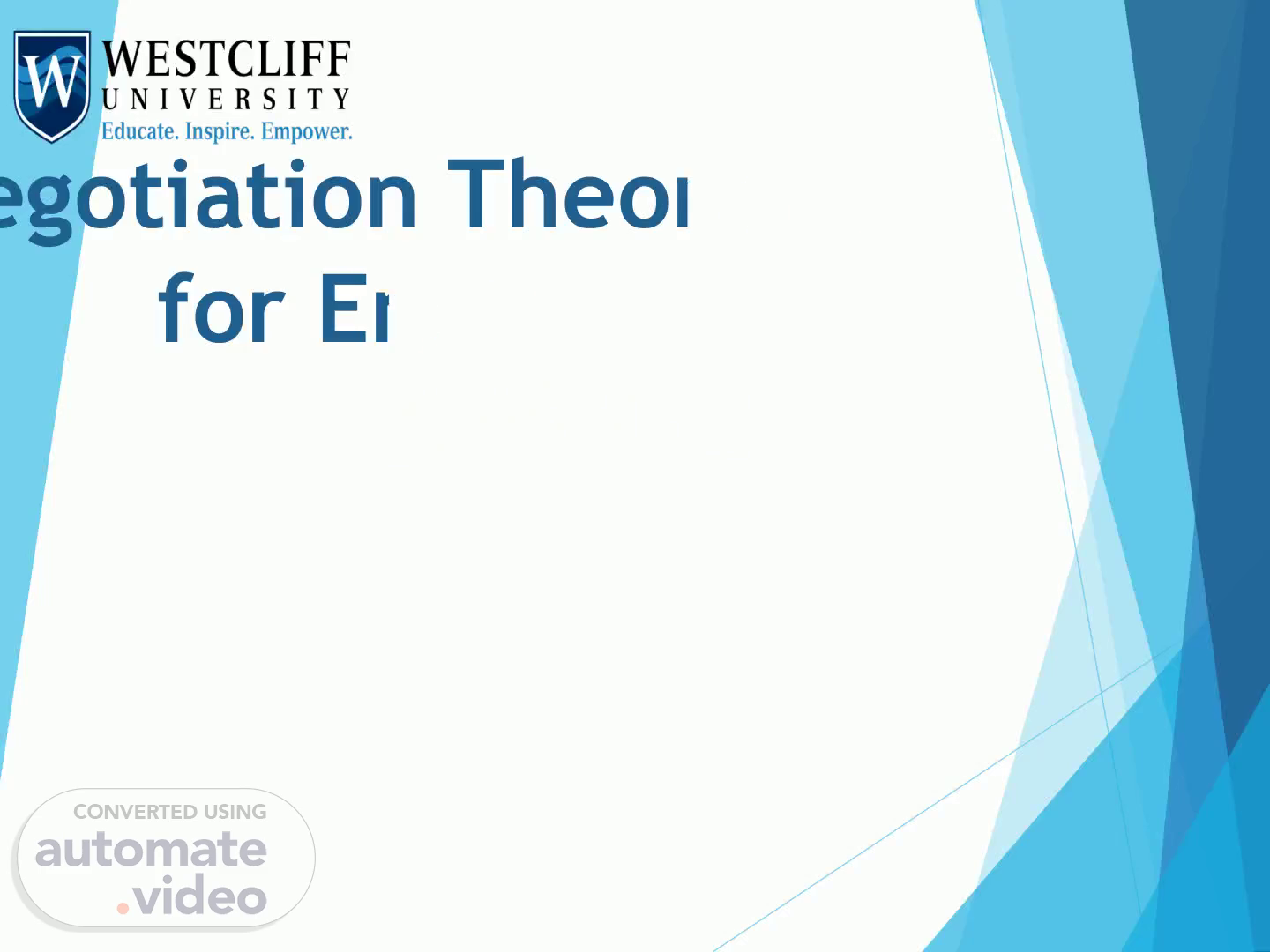
PowerPoint Presentation
Scene 1 (0s)
. . . Negotiation Theory and Skills. for Entrepreneurs.
Scene 2 (10s)
. . . Textbook Information. Essentials of negotiation (7th ed.)..
Scene 3 (23s)
. . . Today’s Agenda. About US. Some Agreement.
Scene 4 (32s)
. . . About US. - Intro. - Ground Rules. - GAP profile photo.
Scene 5 (41s)
. . . Mixed Heavy Week 3 hapter 1 hapter 2 ek5 hapter 8 1 Reading Chapter 3 Chapter 4 Heavy Week 6 Reading Chapter 9 Chapter 10 EXAM Reading Chapter 5 Heavy CLA Chapter 6 Week 7 Chapter 11 Chapter 12 Light Wee Reading CLA Mixed Wee Reading Presentatio.
Scene 6 (51s)
. . Part 1: Fundamental of Negotiation. Chapter 1 : Nature of Negotiation.
Scene 7 (59s)
. . . Learning outcomes. Understand the definition of negotiation, the key elements of a negotiation process, and the distinct types of negotiation..
Scene 8 (1m 17s)
. . . Self Experience. Have you ever negotiated?.
Scene 9 (1m 28s)
. . . .
Scene 10 (1m 34s)
. . Style and Approach. Bargaining and negotiation are not the same..
Scene 11 (1m 58s)
. . Characteristics of a Negotiation Situation. There are two or more parties..
Scene 12 (2m 32s)
. . Interdependence. Working interdependently allows parties to achieve a possible outcome.
Scene 13 (2m 59s)
. . Types of Interdependence Affect Outcomes. The interdependence of people’s goals, and the structure of.
Scene 14 (3m 32s)
. . Alternatives Shape Interdependence. Evaluating interdependence also depends heavily on the desirability of.
Scene 15 (4m 0s)
. . Mutual Adjustment and Concession Making. Negotiation is a process that transforms over time, and mutual adjustment is.
Scene 16 (4m 34s)
. . Two Dilemmas in Mutual Adjustment. The dilemma of honesty concerns.
Scene 17 (5m 0s)
. . Outcomes and Processes. Concessions are greatly aided by trust and a belief..
Scene 18 (5m 21s)
. . Value Claiming and Value Creation. The structure of the interdependence shapes the strategies and tactics.
Scene 19 (5m 48s)
. . Implications of Claiming and Creating Value. Most negotiations are a combination of claiming and creating value, and.
Scene 20 (6m 20s)
. . Value Creation and Negotiator Differences. Value may be created in numerous ways, and the heart of the process lies in.
Scene 21 (6m 50s)
. . Conflict – Definitions. Conflict arises:. From the strongly divergent needs of the two parties..
Scene 22 (7m 12s)
. . Levels of Conflict. Intrapersonal or intrapsychic conflict..
Scene 23 (7m 33s)
. . Functions and Dysfunctions of Conflict. Elements that contribute to conflict’s destructive image..
Scene 24 (8m 7s)
. . Figure 1.2: Conflict Diagnostic Model. Dimension Difficult to Resolve Easy to Resolve.
Scene 25 (8m 24s)
. . Figure 1.3: The Dual Concerns Model. o o Yielding Inaction (Compromising) Problem solving Contending Concern about own outcomes.